Introduction to Gamification
Gamification, the integration of game mechanics into non-game environments, has gained traction across various sectors for its ability to enhance user engagement and motivation. This innovative approach applies elements like points, badges, and leaderboards to activities ranging from education to business, aiming to make mundane tasks more enjoyable and rewarding.
Yu-kai Chou’s “Actionable Gamification” delves into this phenomenon, presenting the Octalysis Framework. This tool identifies eight core drives that motivate human behavior, ranging from the desire for accomplishment to the need for social connectivity. Chou’s framework provides a comprehensive guide to implementing gamification effectively, ensuring it motivates and engages users positively.
Conversely, Tobias Nyström’s “Exploring the Darkness of Gamification” examines the potential pitfalls. It raises critical questions about the ethical implications of gamification, particularly concerning manipulation and addiction. Nyström’s work introduces the Darkness of Gamification Evaluation System (DGES), a framework for assessing the ethical dimensions of gamified systems.
Together, these perspectives frame the central debate: Is gamification a beneficial tool for engagement, or does it border on being a ‘dark pattern’, subtly manipulating user behavior for ulterior motives? This article explores this complex question, analyzing the multifaceted nature of gamification.
The Bright Side of Gamification
Gamification’s allure lies in its power to transform mundane activities into engaging experiences. This transformative capability is explored in Yu-kai Chou’s “Actionable Gamification,” where the Octalysis Framework is introduced. This framework breaks down gamification into eight core drives, including accomplishment, empowerment, and social influence. Each element plays a crucial role in fostering user engagement by tapping into intrinsic motivations, such as the desire for growth and achievement, and extrinsic motivations like rewards and recognition.
For instance, in educational settings, gamification can turn learning into an interactive adventure, where students earn points or badges for completing tasks, thereby enhancing motivation and participation. In the corporate world, gamification strategies like leaderboards or achievement badges can boost employee engagement and productivity, turning routine tasks into competitive, yet collaborative, activities.
However, it’s essential to note that the effectiveness of gamification hinges on its design and implementation. When done right, it can create a positive loop of engagement, where users are motivated not just by external rewards but by the enjoyment and satisfaction derived from the activity itself. This positive aspect of gamification shows its potential as a powerful tool for improving user experience across various domains.
The Dark Side of Gamification
While gamification has its merits, it also harbors a darker aspect, as explored in Tobias Nyström’s “Exploring the Darkness of Gamification.” This perspective scrutinizes the potential ethical pitfalls, particularly focusing on how gamification can manipulate and exploit users.
Nyström’s research underscores issues like addiction and over-reliance, where gamified systems can lead to compulsive behaviors, detracting from their intended benefits. For example, in digital marketing, gamification tactics like limited-time offers or reward-based tasks can create a sense of urgency, pushing consumers to make impulsive purchases. In the workplace, gamified productivity tools might lead to unhealthy competition or burnout, as employees strive to outdo each other on leaderboards or point systems.
The Darkness of Gamification Evaluation System (DGES) introduced by Nyström is pivotal in assessing these ethical dimensions. It serves as a tool to evaluate the potential manipulative aspects of gamification, ensuring that its application does not infringe on user autonomy or well-being.
This exploration into gamification’s darker side highlights the need for balance and ethical consideration in its application. It’s a reminder that while gamification can be a powerful engagement tool, it must be designed and implemented with a keen awareness of its psychological impact on users.
Balancing Act: Ethical Considerations in Gamification
The ethical landscape of gamification is a terrain of contrasts, where the positive potential coexists with risks of misuse. Understanding these dualities requires exploring both beneficial and detrimental examples.
Positive Examples of Gamification:
- Educational Apps: Platforms like Duolingo use gamification to make language learning engaging, with points and streaks encouraging consistent practice.
- Fitness Trackers: Apps like Fitbit gamify exercise, using goals, rewards, and social challenges to motivate physical activity.
- Workplace Productivity: Companies like Salesforce implement gamification to increase employee engagement, with badges and leaderboards recognizing achievements.
Negative Examples of Gamification:
- Social Media Platforms: Features like ‘likes’ and ‘followers’ can lead to addictive behaviors, prioritizing engagement over user well-being.
- Online Shopping: Retail apps use gamified elements (like limited-time offers or reward points) that can encourage impulsive buying.
- Mobile Games: Some games employ tactics like loot boxes or in-app purchases, exploiting psychological hooks for financial gain.
The ethical application of gamification hinges on a balance between engagement and user welfare. Positive examples illustrate gamification’s capacity to motivate and enrich experiences. In contrast, negative instances reveal how it can exploit psychological vulnerabilities. This dichotomy necessitates a responsible approach, where designers prioritize user autonomy and well-being, avoiding manipulative elements that may lead to addiction or detrimental behaviors. The goal is to leverage gamification’s power for good, ensuring that it enhances rather than detracts from the user experience.
What should educators and designers Do?
Gamification is increasingly used in various sectors, its implementation in educational settings and product design warrants a thoughtful and responsible approach.
Designers and educators should consider the following insights into effectively and ethically incorporating gamification. Aligning gamification with core goals, understanding the target audience, maintaining simplicity, promoting positive behavior, assessing impact, and ensuring inclusivity. By following these guidelines, gamification can be transformed from just a tool for engagement to a meaningful and ethical enhancement to learning and user experience.
When integrating gamification into products or curricula, designers and educators should adopt a comprehensive and educational approach:
- Goal Alignment: Start by aligning gamification elements with the core objectives. For educators, this means integrating game mechanics that complement learning outcomes, such as using progress bars to track educational milestones. Product designers should ensure that gamification supports the product’s primary function and enhances user experience.
- Audience Understanding: Tailor gamification strategies to the target audience’s characteristics, such as age, cultural background, and learning styles. For instance, younger students might be more engaged with interactive and visually appealing elements, while adults might prefer more subtle gamification techniques.
- Simplicity and Usability: Avoid over-complicating the gamified system. The design should be user-friendly and intuitive, preventing any potential frustration or confusion. This is crucial in educational settings where the focus should remain on learning, not on understanding complex game mechanics.
- Positive Reinforcement: Utilize gamification to promote positive behaviors and learning. For example, reward systems can be designed to encourage collaboration, critical thinking, and creativity, rather than just rote memorization or competition.
- Impact Assessment: Continuously evaluate the impact of gamification on engagement, learning outcomes, and emotional well-being. Solicit feedback from users to understand the system’s effectiveness and areas for improvement.
- Ethical Considerations: Ethically design gamification elements, avoiding tactics that could lead to addiction, stress, or unfair competition. Consent and transparency are vital, especially in educational environments where the impact on young minds is significant.
- Inclusivity and Accessibility: Ensure that gamification strategies are inclusive and accessible to all users, regardless of their abilities or backgrounds. This might involve providing alternative ways to participate and succeed in the gamified system for those with different needs.
- Balance and Moderation: Strike a balance between gamification and the core content or functionality. The gamified elements should not overshadow the primary purpose of the educational content or product.
- Long-Term Engagement: Aim for sustainable engagement through gamification. Rather than short-term excitement, the focus should be on fostering a long-term interest and intrinsic motivation in the subject matter or product usage.
By adhering to these principles, designers and educators can ensure that gamification is used as an effective, ethical, and educational tool to enhance engagement and learning outcomes.
Conclusion: Navigating the Gamification Spectrum
In conclusion, gamification is a multifaceted tool with the potential for both profound positive impact and significant ethical concerns. While it can enhance engagement and learning, it also bears the risk of manipulation and unintended negative consequences. The key lies in its mindful application. Designers and educators must navigate this spectrum carefully, balancing the allure of gamification with its ethical implications.
By prioritizing user well-being, aligning with core objectives, and employing a responsible approach, gamification can be harnessed as a beneficial tool rather than a dark pattern. This balanced perspective underscores the importance of ethical considerations in gamification, ensuring it serves as an enriching, not exploitative, element in both educational and product experiences.
References
- Chou, Y. “Actionable Gamification: Beyond Points, Badges, and Leaderboards.”
- Nyström, T. “Exploring the Darkness of Gamification – You Want It Darker?”
Estimated reading time: 8 minutes
Subscribe to our email newsletter to get the latest posts delivered right to your email.



Comments